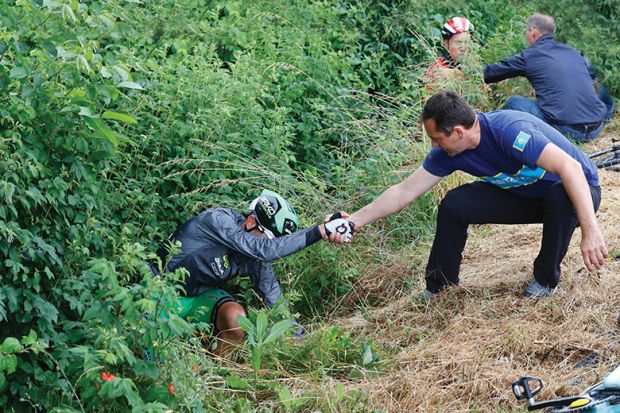The pandemic and its associated lockdowns have affected almost every corner of the globe, but the disruption this has caused to teaching and learning has been far from equal. Some students had a laptop, strong wi-fi and a quiet place to study; others shared out-of-date technology with siblings, had little private space and struggled with patchy access to the internet. For some, bereavement forced studies on to the back burner entirely.
Experts say the difficulties faced by students must not be allowed to widen the gap between the haves and have-nots. But how do tutors make sure their teaching targets those students – first years whose final year of schooling was hugely disrupted as well as other undergraduates – who have lost out on learning?
For David Woolley, director of student and community engagement at Nottingham Trent University (NTU), the first step is identifying who is struggling to keep up. At NTU, the learning analytics system analyses engagement and attendance and lets the university know who appears to be disengaging, so they can then intervene. “We know that the correlation between engagement and attendance and success is phenomenally strong,” he said.
Another method is to stage compulsory workshops during “welcome week” that build agency, resilience or a sense of belonging. “Universities are big places. A tutor might not notice a person is struggling, [and] by and large students don’t ask for help,” he added. This is especially true for male and working-class students, but such workshops can provide them with the confidence to let someone know they are struggling.
Sarah O’Shea, director of Australia’s National Centre for Student Equity in Higher Education, said that the “pandemic has forced a disruption to the education system but also enabled a lot of pedagogical innovation”.
However, “students from families of lower incomes need to be recognised as requiring additional support compared to their more advantaged peers…the need for substantive and additional learning support for these students is key, both in the immediate term but also long term if we are to avoid long-term generational educational disadvantage”, she said.
“Co-design of learning tasks with students offers the potential to both engage students in their learning and facilitate necessary learning gains,” she added. This more collective approach to designing and implementing learning tasks has already been used with success within the higher education system, she said.
Adopting a “students as partners” approach in the design and development of learning tasks “ensures that they are place based and also embedded within the worldview of learners”, according to Professor O’Shea.
She added that Covid-19 restrictions demonstrated that learning does not solely occur in the physical classroom. Therefore, “facilitating a range of learning activities that extend beyond timetabled classes will both increase learning gain and importantly assist in instilling lifelong learning skills for students”.
Mr Woolley agreed that extracurricular and co-curricular activities can be very useful, allowing students to engage with the whole of the university. At the moment, a lack of engagement is unlikely to be due to a lack of provision – universities offer a range of clubs and societies to become involved with – but rather what is on offer, he said.
Recent research has shown that black and minority ethnic students are particularly interested in cultural or faith-based societies, for example. “There must be broad provision that will engage the wide section of society that you’ve brought into the university, otherwise having 200 clubs is pointless,” he said.
Inside the classroom, mentoring – from peers or alumni – along with active and student-centred learning were important tools for universities. “We previously found that active projects supported and facilitated by teachers, rather than students being formally lectured at, significantly supports the progress and achievements of disadvantaged students,” he said.
Mr Woolley believes most university staff do have the skills to deal with a variety of students from different backgrounds and with differing abilities in the classroom. “It’s about what you do with that and creating the right environment within the university to support them,” he said.
POSTSCRIPT:
Print headline: Reach out beyond the classroom
Register to continue
Why register?
- Registration is free and only takes a moment
- Once registered, you can read 3 articles a month
- Sign up for our newsletter
Subscribe
Or subscribe for unlimited access to:
- Unlimited access to news, views, insights & reviews
- Digital editions
- Digital access to THE’s university and college rankings analysis
Already registered or a current subscriber? Login








